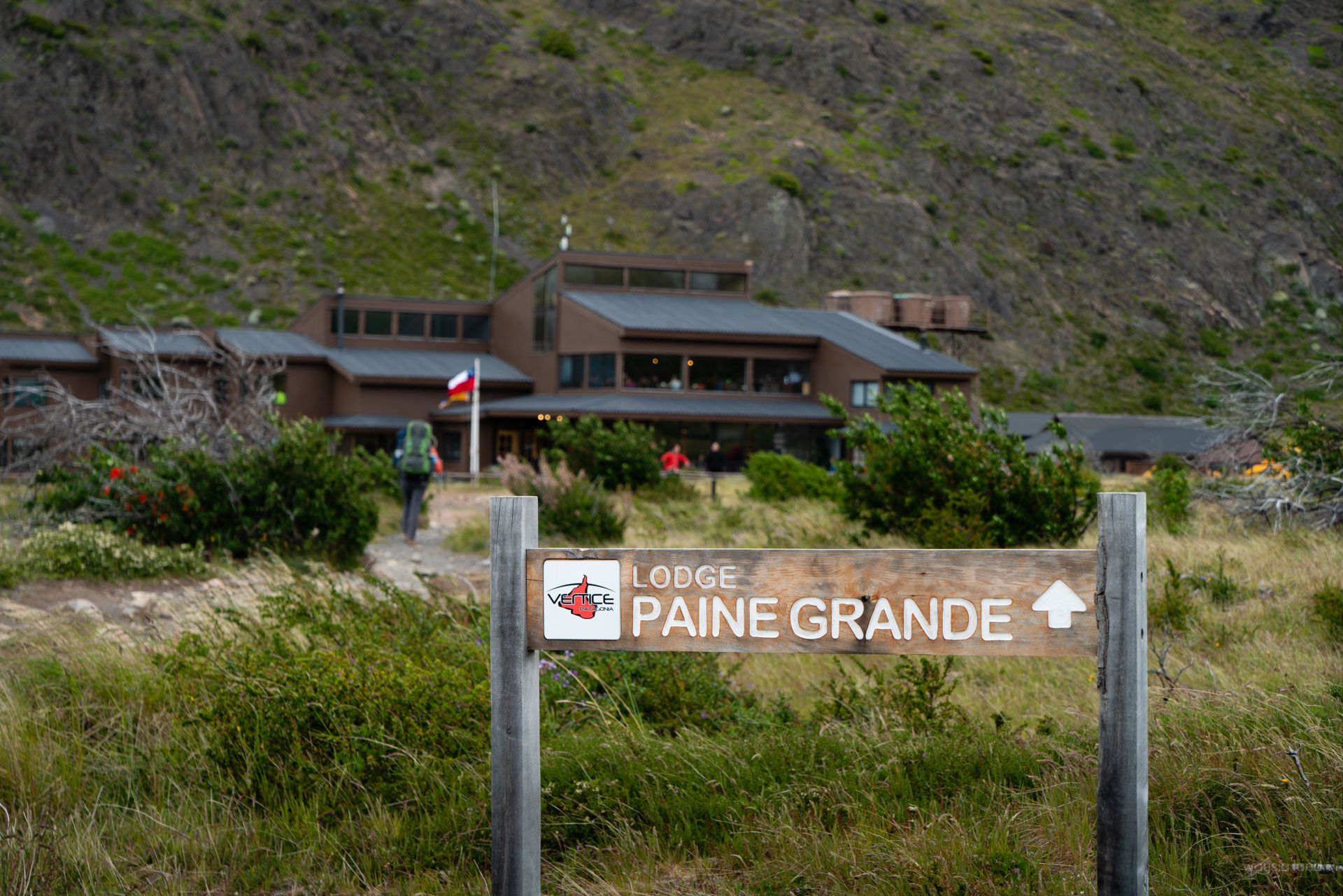How to book campsites in Torres del Paine
How to successfully book campsites for Torres del Paine in 2020 You've tried everything and now you're pulling your hair out.
Booking the O Circuit (O trek) or W trek in Torres del Paine is no easy feat – some even say it’s harder than the trek itself. If you’re reading this then you’ve probably hit a snag in the convoluted booking process.
When I did the trek, I spent about 2 weeks reading up on Torres del Paine including the booking process. I then spent a solid 2 days trying to actually book the damn campsites/refugios.
This isn’t an introductory post about Torres del Paine camping. I’ll write that in the future. This post is for you if you’re finding that you can’t book your desired campsites/refugios for whatever reason, or you’re simply trying to plan ahead.
Why booking a campsite/refugio in Torres del Paine is hard
To successfully book your campsites for Torres del Paine you need to know why it’s hard in the first place.
3 different companies
First and foremost, all the campsites are operated by one of three different companies. CONAF which is government-run, Fantastico Sur and Vertice Patagonia. In terms of bookings, they don’t work together, at all. From a practical sense, for 99.9% of people, it is impossible to only stay at 1 company and you will most likely require at least 2.
Limited places
In the case of Torres del Paine, campsites can be booked out months in advance. Torres del Paine is really accessible and really stunning, which makes it a highly sought after destination.
The O trek is less popular than the W trek by far but is increasingly more popular amongst hikers given that it’s only 2-3 extra nights over the W trek offering a more secluded experience. However, it has a cap on the total number of people allowed daily while the W trek has no cap. This isn’t a hard cap but rather a soft cap enforced by limited accommodation on the trek. Whereas the W trek has multiple campsite options for certain areas and can also be done via day hikes from town, the O trek has very limited options. The only option being if you are physically able to hoof it to the next campsite within a day (quite far). It’s first come first serve and having your bookings effectively means having a ticket for the O trek. Therefore, campsite bookings are THE priority.
It is unclear what the soft cap of the O trek is although word is that it’s around 80. The first O trek campsite Serón has a capacity of 50 campsites according to one source. However, you could theoretically skip Serón meaning the soft cap is higher than 50. I can’t find official figures for Los Perros but given that it’s situated within trees, there is most definitely is a limit for that campsite.
Seasonal limitations
The O trek isn’t open at all during Winter season (May to September) and the W trek is only open if you use a guide during Winter. Despite the broader Torres del Paine park seasons, the campsites/refugios have their own opening dates with large blackouts in September, October and April. For example Fantastico Sur states:
Opening dates season 2019-2020:
Camping Central and El Frances: 01 September to 30 April
Refugio Central: 15 September to 30 April
Refugio Torre Norte: 15 October to 31 March
Sector de El Chileno: 01 October to 30 April
Sector Frances: 15 September to 30 April
Refugio and camping Los Cuernos: 01 October to 31 March
Cabins Los Cuernos: 21 October to 31 March
Sector Seron : 01 October to 31 March
Pockets of availability
Like booking accommodation in a hotel or hostel for more than 1 night you may find that availability is only available on specific days, not the days you want. However, in the case of Torres del Paine, depending on the campsite, this availability can be useless and serve as a dead vacancy. For example: If campsite 2 has availability on Day x+1 but campsite 1 doesn’t have any on day x, then the vacancy for campsite 2 is wasted. This is a generalisation and I’ll get into why this isn’t always a bad thing later, but it illustrates the point.
O trek must be done counterclockwise
The non-W portion of the O trek must be hiked counterclockwise and I’d say it’s probably due to trails that are as wide as a single person. In terms of booking, this is almost a positive in disguise. It reduces the permutations of possible itineraries making you able to zero in on success or failure a lot faster.
The booking websites aren’t up to par
Don’t get me wrong, the websites are good but they are far from perfect. From experience, there is definitely a discrepancy between the availability of campsites on the websites and what is actually available. If I had to guess I’d say the companies are working from different systems and require a manual update every so often leading to an incorrect amount of inventory being displayed, and therefore bookable online.
Bookings can be made but refunded within 1 month
As of writing, Fantastico Sur allows you to book but you can get a full refund if you cancel more than 1 month earlier. CONAF campsites are free but with limited places (although I believe now you must buy the entry ticket if you want to book the campsite). This causes all sorts of havoc since people can sit on bookings for a considerable amount of time.
You need to thoroughly plan
One thing that’s overlooked is that you need to plan, and thoroughly at that. If you want to fly by the cuff, chances are you won’t succeed, at least not when it comes to booking campsites in Torres del Paine.
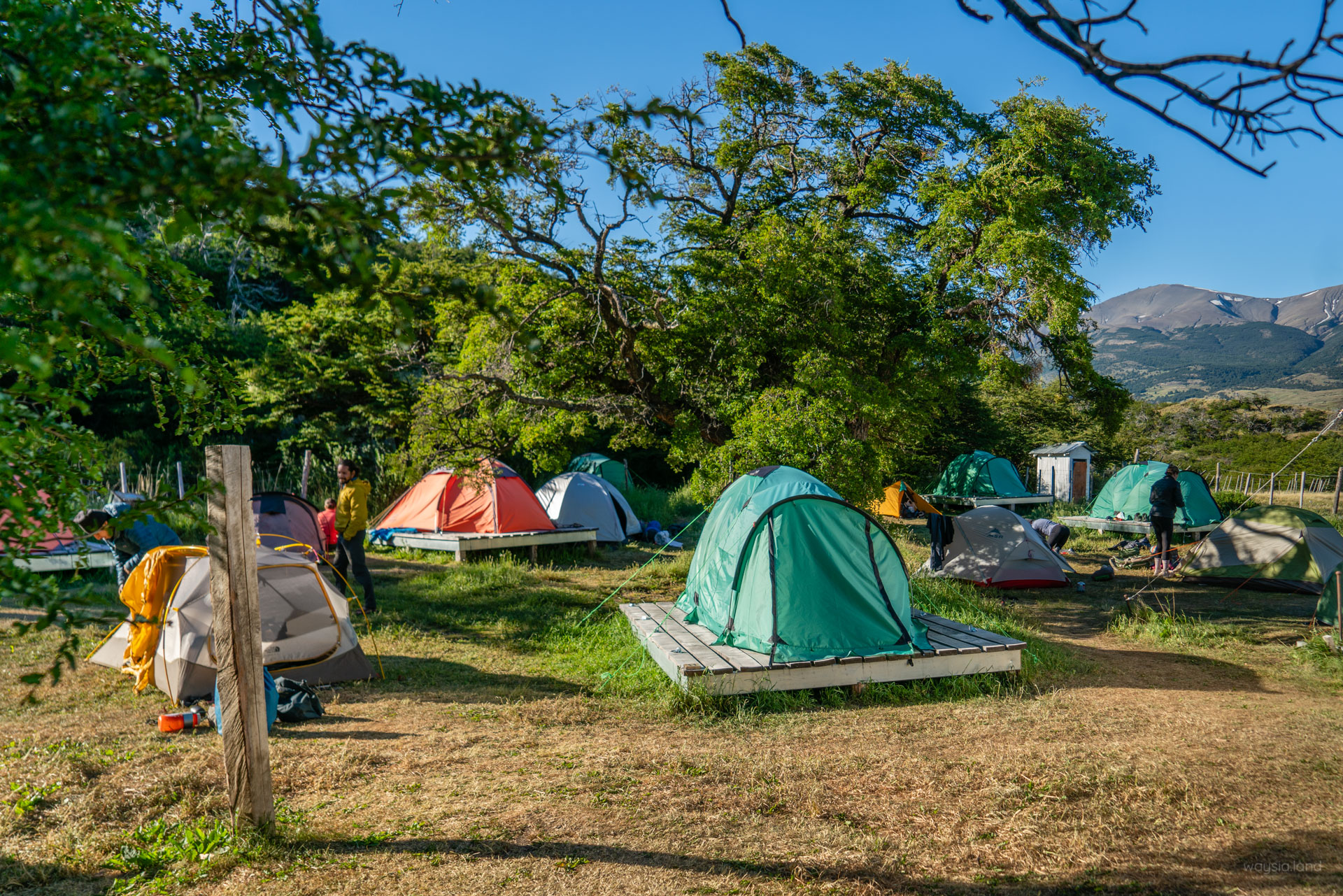
Step 0: Have your own tent
If you have your own tent you can get away with a lot more than if you didn’t have your own tent. As with some of the beds in the refugios (lodges), quality tents already set up for you can be rented. Some tents can also be rented with extras such as sleeping pads and sleeping bags. All these beds, tents and extras are limited in number whereas your own tent needs only a plot of land.
If you don’t have your own tent you can still make it work, it will just be harder since space will be limited due to the reasons above.
Step 1: Choose O trek or W trek (or Q trek)
W trek is by far the most popular showing you the highlights of Torres del Paine with ski lodge-style accommodation available in addition to camping.
O trek requires camping which alone excludes a lot of people who simply don’t want to camp. The W trek is part of the O trek so by doing the O trek, you see everything.
Almost no one does the Q trek but it is essentially an extra bit tacked on the O trek. I hiked a short part of it to get to Mirador Pehoé and based on the map, I don’t think hiking any further would provide any additional unique views (unless you’re talking about the viewpoints on the Bus route).
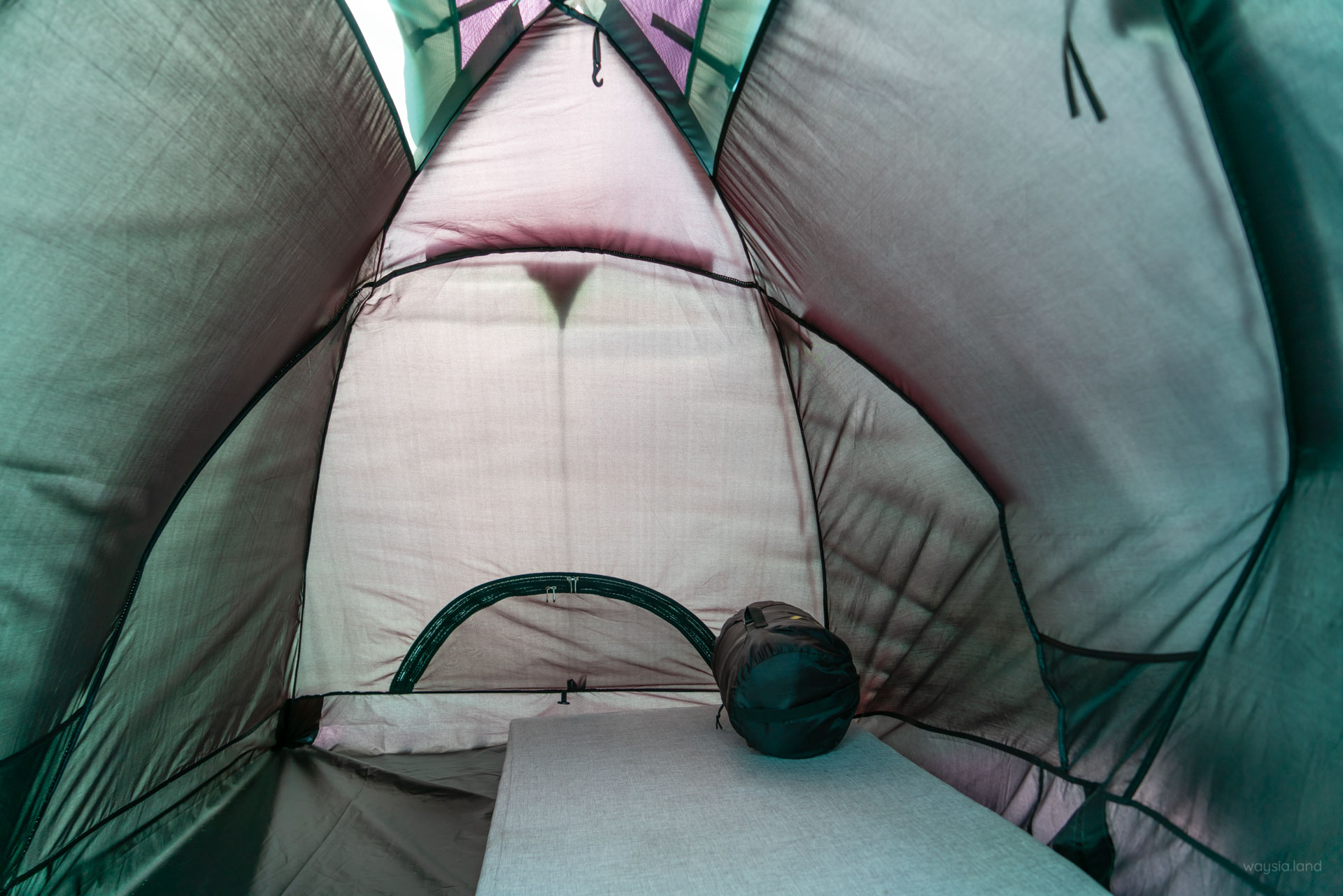
Step 2: Allow for flexibility in cost and dates
If you’re planning on doing the O trek in say 8 days then pick 8 specific dates and plan around getting exactly those dates, you better book damn early and not expect to secure your ideal booking. The same goes for the W trek. Flexibility is extremely key to getting the trek booked. You should aim for a range of dates and if required, modify your trek to be shorter which may open you up to new availability at campsites. You could make it longer but that will probably end up being more annoying than it’s worth.
My trip was extremely flexible and when I tried to book in early October it was a complete nightmare. It didn’t matter if I was looking at immediate availability or in March. It was hell trying to find the campsites required on consecutive dates. I threw ideal months out the window (including ideal weather but wound up getting lucky with that) and tried to get any dates that would work.
I ended up booking a bed at Los Cuernos refugio on 1 night simply because there was no other option, at least online. I didn’t bring my own tent (Step 0) so I couldn’t stay at Italiano. Francés and Los Cuernos didn’t have any tents available for rent. It cost a small fortune (US$110) but hey, I ended up getting to do the trek so there was that.
In terms of other unwanted costs, I also booked a tent that came with food, sleeping pad and sleeping bag. I brought my own sleeping pad and sleeping bag so I didn’t need those. However, when trying to book, there was no other option. Perhaps if I contacted them I could have gotten just the tent, but I just wanted it locked in ASAP. The sleeping pad ended up being something like a thick futon mattress, which was a nice surprise. The food theoretically saves you weight but the food was for my night 1 dinner and day 2 breakfast – leading to a lighter pack for a whopping 4 hrs total. I also ended up carrying way too much food regardless. 🤦♂️
Step 3: Check the booking websites and check often
Website bugs, cancellations, I don’t know. Whatever the reason, sometimes availability can turn up when it previously showed as unavailable. For me, I checked and availability for a campsite was there when it wasn’t just the day earlier. Hooray!
Step 4: Prepare a spreadsheet
You’ll need a spreadsheet, trust me. The idea is to see possible itineraries and daily trekking distances and timings.
Step 5: Forget the standard itineraries
Itineraries are recommendations only and if you can’t get it exactly, no problem. Don’t get me wrong, start with one but modify it. For example, what if an itinerary states you stay at Serón > Dickson > Los Perros in that order but you can’t get all 3 campsites on consecutive days? Are you fit? Can you do a 10hr+ day? Then, why not miss Dickson and do Serón > Los Perros? This is what I did. I wasn’t originally planning to skip Dickson but I wouldn’t look back now as it worked out for the better.
It’s here I’ll mention it’s key to understanding how far and how fast you can trek. Remember, these are mountain kms not regular walk around town kms. Although large portions of the trek are flat, you could be carrying a heavy pack. Understanding this will allow you to gauge if you can complete a planned day’s hike and determine whether alternatives are viable, keeping in mind trail closing times.
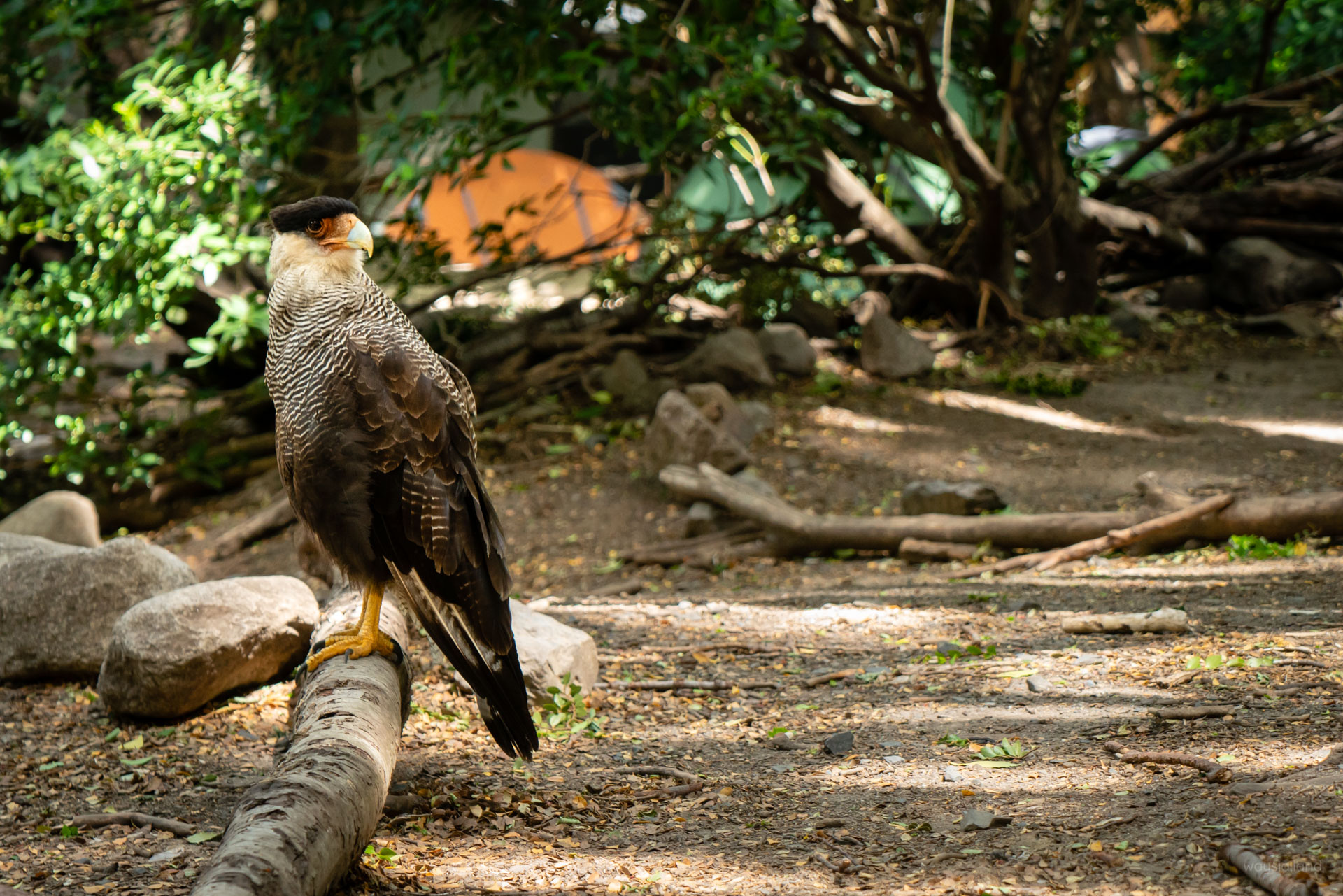
Step 6: Substitute campsites
Some campsites in Torres del Paine are very close to each other. Close is a relative term and could be many minutes to a few hours away. The point is if you are capable of walking x hrs more on 1 day (thus x hrs less on the next), and your itinerary has a hole that can be filled by booking a substitute site, then your problem is solved. Some examples of substitutable campsites with official distance and timings:
- Italiano and Francés (2km/0.5hrs)
- Francés and Los Cuernos (3km/2hrs)
- Italiano and Los Cuernos (5km/2.5hrs)
- Chileno and Central (3km/1.5hrs)
- Grey and Paine Grande (11km/3.5hrs)
- Paso and Grey (7km/5hrs)
It’s worth noting that not all campsites have the same facilities. Some have nicer showers and toilets, some have food you can buy, refugios have a bar, etc. A perfect example is Italiano vs Francés vs Los Cuernos. If that’s something that doesn’t matter to you, at least for the particular nights in question then this is an easy win.
The Torres campsite (between Mirador base de las Torres and Chileno) has been closed for some time now (unknown reopening) which makes Chileno highly sought after for a Torres sunrise. As such if you can’t get Chileno, your next best option is Central. Keep in mind the official stance is that you’re not supposed to hike from Central to the Torres for sunrise. But official schmicial amirite?

Step 7: Start somewhere else
Building further on forgetting the standard itineraries, starting locations are also flexible, even for the uni-directional O trek. I was so fixated on Serón being the first campsite for the O trek that I completely missed that I could start at Paine Grande. Instead of ending the trek with the Torres as the final major view, Glacier grey would be the culmination of the trek. I did eventually end up getting Serón as my first campsite but the options are there if you’re not so lucky.
Some variants for Day 1 are as follow:
- Central to Serón (O trek only)
- Central to Mirador base de las Torres to El Chileno (O trek and W trek)
- Central to Mirador base de las Torres to Central(O trek and W trek)
- Central to Dickson (31km, O trek only)
- Paine Grande to Glacier Grey to Grey (O trek and W trek)
- Paine Grande to Glacier Grey to Paine Grande (O trek and W trek)
Step 8: Still missing campsites? Send an email
The above steps are where you’ll spend most of your time. Chopping and changing, seeing what works, or rather what doesn’t. If after all that you’re still missing campsites, what then?
Send an email to the respective campsite operator (they understand English). As hopeless as that sounds, it worked for me. Remember when I said the websites weren’t up to par and had some manual process involved? I secured 5 nights via online website booking and 1 night via an email. I paid the email booking via Paypal and the whole process didn’t take more than 2 days (albeit a butt-clenching 2 days). It was quite strange since that’s the process I’d expect from a small business, not from a company that receives thousands of visitors per year.
Basically, I booked what I could online just to lock them in. Then I emailed Fantastico Sur and Vertice separately asking if they had availability for campsite Dickson or Los Perros (not both) and Chileno. Providing Vertice with 2 campsite options gives me more chances of success with minimal back and forth. Back and forth over email can be a pain and end up taking days, time which you really don’t have. Both itineraries would be physically possible with one preferred over the other but remember flexibility is the key.
Los Perros was secured via email and I was informed Chileno was booked out. I had already secured Central, but Chileno was ideal. So that was my set of bookings complete! Phew, what a doozy.
ventas@verticepatagonia.cl
info@fantasticosur.com
Step 9: Skip staying at Italiano, Francés or Los Cuernos
On the W trek, you’ll probably have to stay at either Italiano, Francés or Los Cuernos especially if you want to hike to the amazing Britannico lookout. These are all small campsites and it’s logistically mandatory staying at one of them, or so it seems…
Paine Grande to Britannico to Los Cuernos is 23.3km with the initial hike to Británico being taxing. If you’re doing Mirador Pehoé on the same day that’s about an extra 8km. While possible, this makes it very hard to go from Paine Grande to Británico to Central in a single day as you’re looking at 34.9km without Mirador Pehoé, 42.9km with Mirador Pehoé. If you skip Pehoé and Británico instead settling for Mirador Francés (like most people do), I’d say it’s a lot easier but you’re still looking at a ~30km day (you’re also missing out). I don’t know how many see Pehoé but my friend Cat and I were the only ones going there at sunrise.
Alternatively, if you break the W so it becomes more like a ‘UI’, skipping Italiano to Central (arguably one of the least impressive sections of the park), you can still see all the highlights without staying at Italiano, Francés or Los Cuernos. The way to do it is from Paine Grande to Británico to Paine Grande. Now you can either stay at Paine Grande (or Grey) to see Glacier Grey the next day, or if you’ve planned to see it earlier, catch the catamaran to Pudeto, bus to Laguna Amarga (entrance) then make your way to and stay at Central (to do the Torres hike the next day). Alternatively, if you’re placing Británico at the end of your trip, simply head back to town.
Don’t want to break the W? You could theoretically do Paine Grande > Británico > Paine Grande (camp) > Central (camp) over 2 days but you’d be walking Paine Grande <> Italiano a total of 3x. It’s a nice walk but it’s also very crowded at parts which makes it less nice since it’s very hard to overtake someone in this section especially the closer you get to Italiano.
Step 10: Make the W trek your backup (if O trek is your plan)
First, ask yourself if you’d be happy if you just did the W trek. What is the likelihood that you’d ever return to do the O trek if you so fancied? Some people do it and in fact I keep reading people wanting to return to do the O trek. Personally, I wouldn’t unless I was showing someone around as there are other places in the world that I have yet to experience. If you simply must do the O trek then by all means, ignore this step but you’re running out of options if you’re this far down the list and may have to wait till another year. If you can live with this step then you’ve made your life much easier.
For me my original plan was to do the W trek, that is until I got all hyped up for the O trek after speaking to some people. Then I ran into the booking problems. I wound up securing 5 of the 6 campsites over a stressful 2 days with the plan to do the O trek. Even if I didn’t secure the last O trek campsite, I would still have all the required campsites for a W trek. Knowing that was a huge relief. It would allow me to try all the last minute stuff below and leave me with a backup plan. Stars aligned and I later ended up securing all the campsites allowing me to do the O trek.
In hindsight, I wouldn’t settle for the W but that’s after trekking the O. If I had never experienced it then I’d be none the wiser.
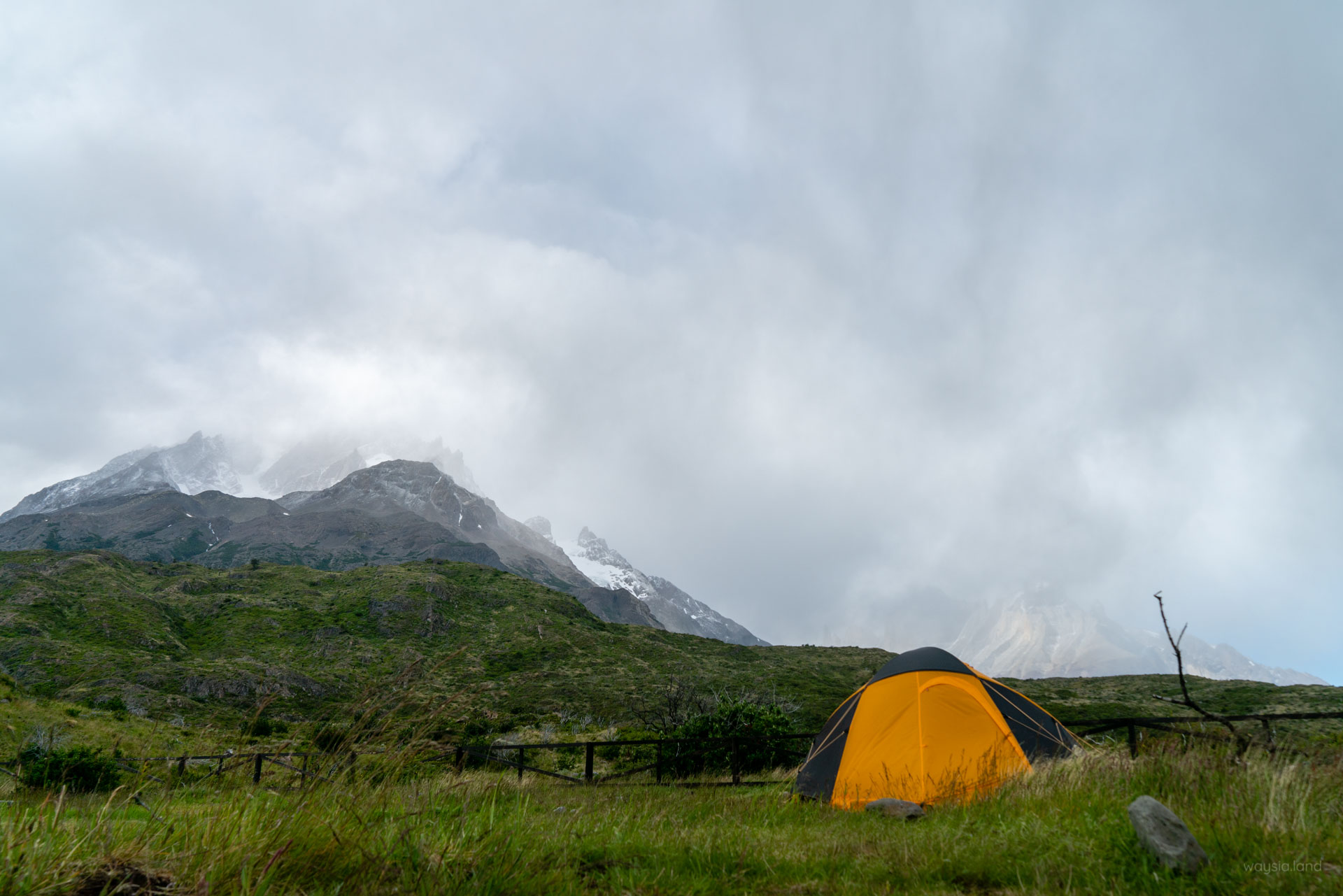
Step 11: Ask at the offices in Puerto Natales
This step is something I wouldn’t do personally. That is, book a partial trek and hope for the best after risking the leave I’ve already taken and money I’ve already spent on flights and everything. However, there are multiple sources saying that asking at the respective offices in Puerto Natales can work. I suppose it would work similar to the email router but with a faster response time.
So how does this even work? One potential contributing factor, last-minute cancellations.
Two, take for example a potential closure of John Gardner pass. I don’t know how often that would be but when it does happen, it doesn’t take a genius to figure out all the bookings will be out of whack. I’ve been informed everyone radios around so people will be aware you won’t be checking in or you will be staying at the same camp again. However, there would be a build-up of people at Los Perros (the campsite just before the pass) and free space at Paso, Grey or even Paine Grande (the campsites after the pass) for that night created by everyone that didn’t cross in time. The subsequent nights’ bookings are also messed up since people that didn’t make it, are now 1 day behind schedule, creating both availabilities (where there was none before) and overcapacity (when fully booked). How is this overcapacity handled if backup spare beds (or tents) aren’t available?
Three, if I had to put money on it, I’d guess the companies have an allocation that isn’t available generally that they can provide at their discretion.
And four, perhaps the system is just terrible. Serón looked crowded but didn’t look full (everyone moved their tent behind the building for protection against the wind). Grey and Paine Grande looked busy but by no means full either. It’s hard to tell due to the permanent tents there for rent, which are possibly empty. Dickson looked like a ghost town, at least when you take into account the size of the land there. The other campsites were hard to gauge due to the layout. The ranger logbooks that you sign also didn’t have pages and pages of people in them. Perhaps I got there early but I wouldn’t consider leaving camp between 0830 and 1100 early. So why did I have so much trouble booking?
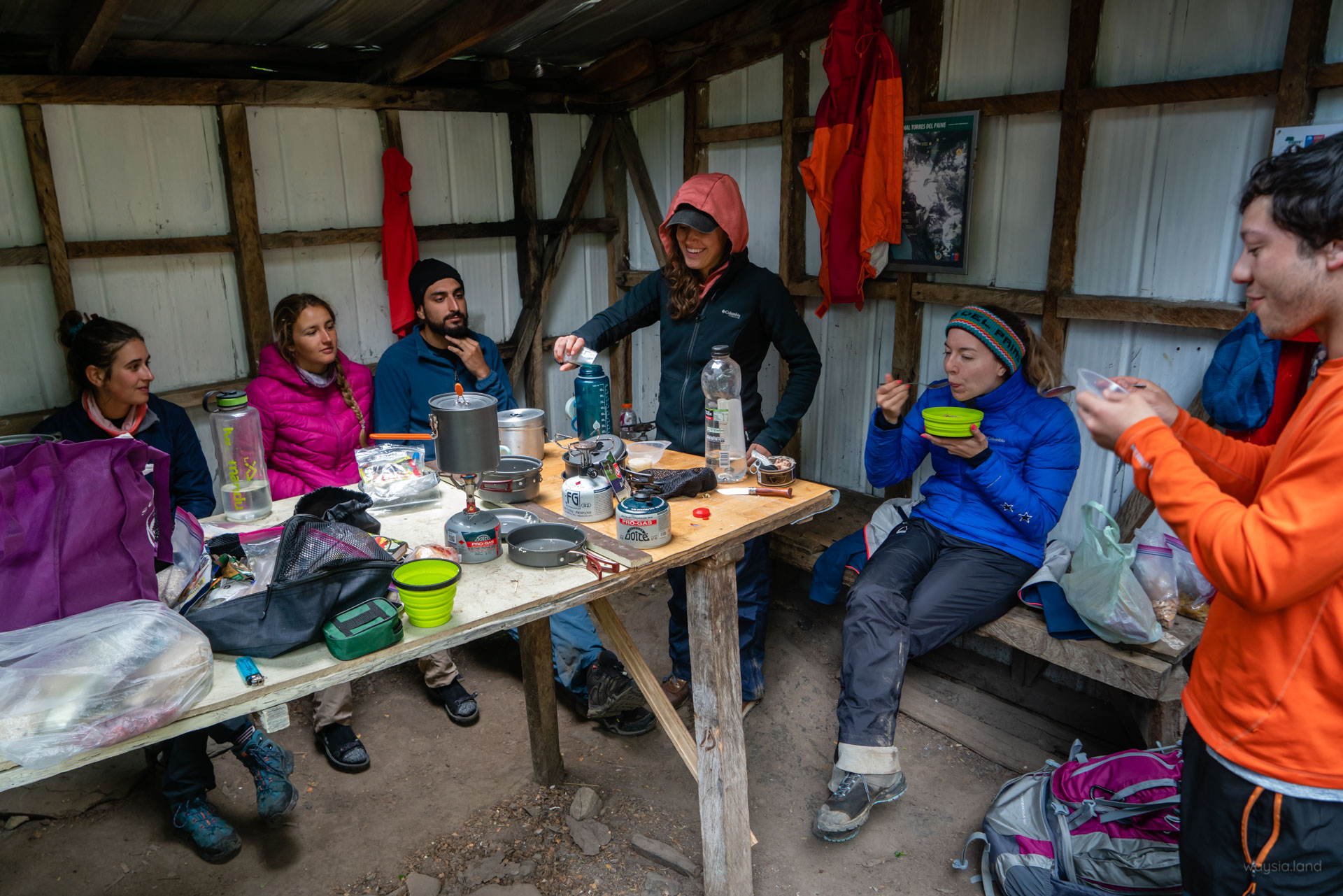
Step 12: Make friends
So you’ve decided to book what you’ve gotten and boarded the plane despite not having a full set of campsites booked. You’re planning to ask in Puerto Natales or have already asked and that’s failed. Now what? Everyone in Punta Arenas and Puerto Natales is liking planning to do the same thing, which is to visit Torres del Paine. Get along with someone? Ask about their itinerary and if it lines up with yours, ask if they have space on whatever night you’re missing. Tents that are rented from Vertice and Fantastico Sur are 2-3 man tents with ample space for 2 people and their gear. Unless they’re ultralight hikers, even people with their own tents can tend to fit an extra person in.
Step 13: Wing it by just showing up with as many bookings as you can make
Given that I wouldn’t be boarding the flight without the bookings, you won’t find me doing this either. Not a step to take lightly. At worst you could be denied entry when they look at your itinerary and you’re missing far too many bookings. At the very least you could be prevented from proceeding past certain points (e.g. not having either Los Perros or Dickson) which would really put a dampener on your trip.
However, I met people on the trek that winged it. One was missing a campsite and ending up booking a refugio bed on the spot. Having your own tent is probably the only way you could get away with this reliably (see Step 0), unless you manage to mooch a friend’s tent. Another group was traveling ahead of their itinerary. They were also *ahem* quite attractive so they had that going for them. The larger the campsite, the more availability there will be and thus better chances of success.
Step 14: Break up the trip into multiple park visits
This will be pretty inconvenient and there will be the cost of transfers, multiple park entries and time but it will allow you to see the park with either minimal bookings or bookings on non-consecutive days. Many people see the Torres or Glacier Grey as a day hike, you don’t need to stay in the park. Understanding that you could plan your bookings around this.
Perhaps you have Serón and Los Perros booked and nothing else. This will allow you to complete the entire non-W portion of the O trek. So once you get to Glacier Grey you head to Paine Grande and take the catamaran out (26km day with the mountain pass) and head back to town or accommodation outside of the park. The next day you return to the park on the bus and hike up to the Torres. Perhaps now you can find accommodation and can stay in the park. If not, return to town again and come back the next day to do the Británico hike. I did say it would be a pain physically and mentally, but using that example you can see the entire park with just 2 campsites. For that example, you probably need to convince the rangers of your fitness or they might expect you to have accommodation at Paso or Grey. Keep in mind this is but 1 example, once you look at the trek this way you’ll realise the options are rather endless, especially when it comes to the W trek.
Step 15: Book a tour
In general, tour agencies either book out accommodation early or have a special allocation they can use. Having seen the prices for the tours this is by far the last thing I’d consider doing for Torres del Paine. However, there may be those of you where this is the only viable option, and it is an option, after all, just an expensive one.
After it’s all booked and you’re on the trek
Despite all the planning and stuff you may not want to stick to your planned itinerary even if you have all the campsites booked. Arriving at a campsite far too early can be downright boring and if you read people’s accounts, they do end up arriving much earlier than anticipated. It’s hard to plan how fast you can hike unless you’ve done this thing before. Not only that but you could meet people who you want to keep trekking with, if your itinerary is slower than theirs then you need to speed up your already booked itinerary. As with ‘wing it’ step, your own tent is required unless you can mooch someone else’s tent.
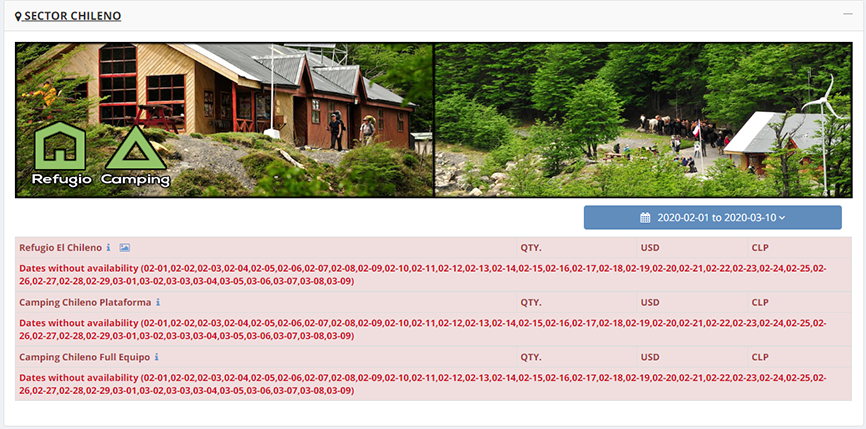
That’s how to book Torres del Paine successfully
And there you have it, how to book Torres del Paine campsites and refugios. If you do find a hit on all campsites on consecutive days, don’t mull it over, don’t sleep on it – book it immediately or it may be forever gone.
One last tip is to set a date range for Fantastico Sur’s website. e.g. Try to book a campsite for the whole month. It will tell you the dates that it’s not available. It’s annoying to read but it’s far easier to see availability in bulk.
Did I miss anything? Let me know in the comments below.
Official websites:
Fantastico Sur – http://int.fantasticosur.com/en/online
Vertice Patagonia – https://www.verticepatagonia.cl/home
CONAF – http://www.parquetorresdelpaine.cl/
